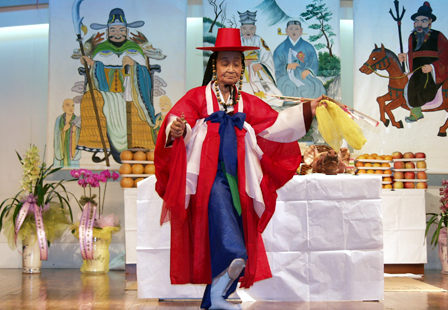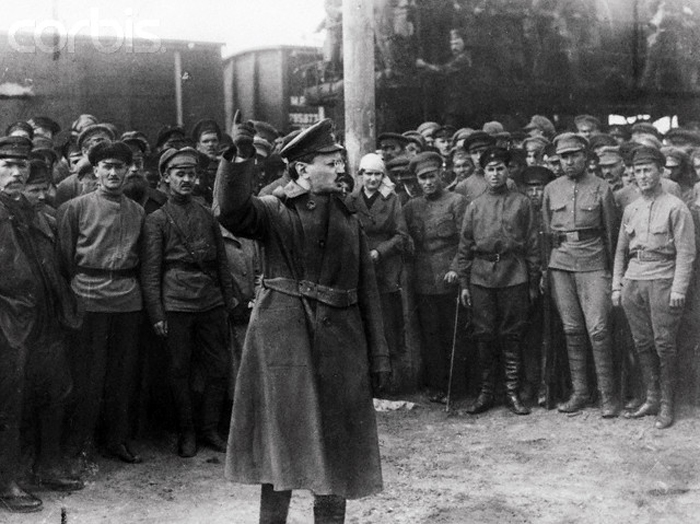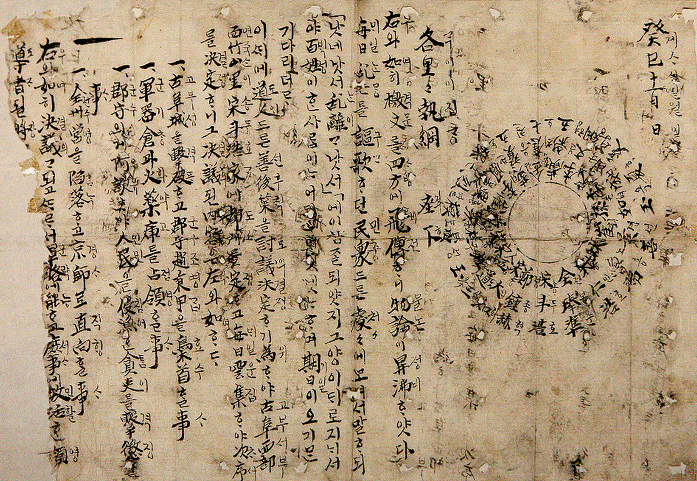|
Cheondogyo
Cheondoism (spelled Chondoism in North Korean sources; ) is a 20th-century Korean pantheistic religion, based on the 19th-century Donghak religious movement founded by Ch'oe Che-u and codified under Son Pyŏng-Hi. Cheondoism has its origins in the peasant rebellions which arose starting in 1812 during the Joseon dynasty. Cheondoism incorporates elements of Korean shamanism. It places emphasis on personal cultivation and social welfare in the present world. Splinter movements include Suwunism and Bocheonism. Name ''Cheondogyo'' translated literally means "religion of the Celestial Way", where ''cheon'' means "sky", ''do'' means "way" (written with the same character as Chinese Tao), and ''gyo'' means "religion", "teaching", "-ism". Beliefs Over time, Cheondoism has also adapted elements of other Korean religious traditions, including Do (Taoism) and Buddhism. In keeping with its roots in Confucian thought, Cheondoism venerates Cheon (Sky) as the ultimate principle of good a ... [...More Info...] [...Related Items...] OR: [Wikipedia] [Google] [Baidu] |
Son Byong-hi
Son Byong-hi (April 8, 1861 – May 19, 1922) was a Korean religious leader and independence activist. He was born in Cheongju, in Chungcheong province. He became the third leader of Donghak (Eastern learning), an indigenous religious movement founded from 1860 to 1864. His honorary religions name was Uiam and he is referred to hereafter by that name. The founder of Donghak, Choe Je-u (religious name Su-un), and the second leader, Choe Sihyeong (religious name Haewol), had both been executed. Haewol, Uiam’s mentor and predecessor, was involved in a peasant revolt in 1894 (referred to as the Donghak Peasant Revolution) and he was executed in connection with that in 1898. Thereafter, Uiam assumed leadership of Donghak but was forced to flee to Japan in March 1901. He was accompanied with his brother and chief lieutenant Yi Yong-gu. In Japan, he studied modern western ways which had been adopted by the Japanese after the Meiji Restoration. Up to that point Donghak was highly ... [...More Info...] [...Related Items...] OR: [Wikipedia] [Google] [Baidu] |
Choe Je-u
Choe Je-u, who used the pen name Su-un (18 December 1824 – 15 April 1864), was the founder of Donghak, a Korean religious movement which was empathetic to the hardships of the minjung (the marginalized people of Korea), opposed Catholicism and its association with western imperialism and offered an alternative to orthodox Neo-Confucianism. The latter was the ideology of the Joseon Dynasty government; it supported the status quo; and was ineffective in stemming abuses by local officials and the spread of Catholicism. He combined Korean shamanism, Daoism, Buddhism and spiritual Neo-Confucianism in an “original school of thought”. He did not have a concrete nationalistic or anti-feudal agenda, rather: “His vision was religious, and his mission was to remind his countrymen that strength lay in reviving traditional values.” Nevertheless, Joseon authorities confused his teachings with Catholicism; and he was executed in 1864 for allegedly preaching heretical and dangerous ... [...More Info...] [...Related Items...] OR: [Wikipedia] [Google] [Baidu] |
Cheondoism
Cheondoism (spelled Chondoism in North Korean sources; ) is a 20th-century Korean pantheistic religion, based on the 19th-century Donghak religious movement founded by Ch'oe Che-u and codified under Son Pyŏng-Hi. Cheondoism has its origins in the peasant rebellions which arose starting in 1812 during the Joseon dynasty. Cheondoism incorporates elements of Korean shamanism. It places emphasis on personal cultivation and social welfare in the present world. Splinter movements include Suwunism and Bocheonism. Name ''Cheondogyo'' translated literally means "religion of the Celestial Way", where ''cheon'' means "sky", ''do'' means "way" (written with the same character as Chinese Tao), and ''gyo'' means "religion", "teaching", "-ism". Beliefs Over time, Cheondoism has also adapted elements of other Korean religious traditions, including Do (Taoism) and Buddhism. In keeping with its roots in Confucian thought, Cheondoism venerates Cheon (Sky) as the ultimate principle of goo ... [...More Info...] [...Related Items...] OR: [Wikipedia] [Google] [Baidu] |
Chondoist Chongu Party
The Chondoist Chongu Party is a popular front party in North Korea. The party was founded on 8 February 1946 by a group of followers of the Ch'ŏndogyo. The party increasingly came under the influence of the government over time and is a part of the Democratic Front for the Reunification of Korea, a nominal alliance of parties dominated by the ruling Workers' Party of Korea. The founding-leader of the party was Kim Tarhyon. The party is headquartered in the capital Pyongyang. History The Ch'ŏndogyo religious ideology was founded in response to the Christian missionary activities in Korea in the end of the nineteenth century. The Ch'ŏndogyo became a hotbed of Korean nationalism. Ch'ŏndo farmers participated in the Donghak Peasant Revolution in 1894 and the movement played an important role in the ''March 1st Movement'' in 1919. The communist parties of the Soviet Union and Korea perceived Ch'ŏndogyo as a "utopian peasant movement". By 1945, Ch'ŏndogyo had the second la ... [...More Info...] [...Related Items...] OR: [Wikipedia] [Google] [Baidu] |
Cheondoist Chongu Party
The Chondoist Chongu Party is a popular front party in North Korea. The party was founded on 8 February 1946 by a group of followers of the Ch'ŏndogyo. The party increasingly came under the influence of the government over time and is a part of the Democratic Front for the Reunification of Korea, a nominal alliance of parties dominated by the ruling Workers' Party of Korea. The founding-leader of the party was Kim Tarhyon. The party is headquartered in the capital Pyongyang. History The Ch'ŏndogyo religious ideology was founded in response to the Christian missionary activities in Korea in the end of the nineteenth century. The Ch'ŏndogyo became a hotbed of Korean nationalism. Ch'ŏndo farmers participated in the Donghak Peasant Revolution in 1894 and the movement played an important role in the ''March 1st Movement'' in 1919. The communist parties of the Soviet Union and Korea perceived Ch'ŏndogyo as a "utopian peasant movement". By 1945, Ch'ŏndogyo had the second larg ... [...More Info...] [...Related Items...] OR: [Wikipedia] [Google] [Baidu] |
Donghak
Donghak (formerly spelled Tonghak; ) was an academic movement in Korean Neo-Confucianism founded in 1860 by Choe Je-u. The Donghak movement arose as a reaction to seohak (), and called for a return to the "Way of Heaven". While Donghak originated as a reform movement and revival of Confucian teachings, it gradually evolved into a religion known today as Cheondoism in Korea under the third patriarch. History Joseon, which patronized Neo-Confucianism as the state ideology, saw an increasing polarization between orthodox Confucian scholars and efforts by other Confucian scholars to revive social ethics and reform society. The increasing presence and pressure from the West created a greater sense of urgency among reformers, and thus Choe Je-u first penned his treatise, ''Comprehensive Book of Eastern Learning'', or ''Dongkyeong Daejeon'' (). This treatise marked the first use of the term "Eastern Learning" and called for a rejection of God (in the Christian sense), and other ... [...More Info...] [...Related Items...] OR: [Wikipedia] [Google] [Baidu] |
Religion In Korea
Throughout the ages, there have been various popular religious traditions practiced on the Korean peninsula. The oldest indigenous religion of Korea is the Korean folk religion (a version of Shamanism), which has been passed down from prehistory to the present. Buddhism was introduced to Korea from China during the Three Kingdoms era in the fourth century, and the religion pervaded the culture until the Joseon Dynasty, when Confucianism was established as the state philosophy. During the Late Joseon Dynasty, in the 19th century, Christianity began to gain a foothold in Korea. While both Christianity and Buddhism would play important roles in the resistance to the Japanese occupation of Korea in the first half of the 20th century, only about 4% of Koreans were members of a religious organization in 1940. Since the division of Korea into two sovereign states in 1945—North Korea and South Korea—religious life in the two countries has diverged, shaped by different political stru ... [...More Info...] [...Related Items...] OR: [Wikipedia] [Google] [Baidu] |
North Korea
North Korea, officially the Democratic People's Republic of Korea (DPRK), is a country in East Asia. It constitutes the northern half of the Korean Peninsula and shares borders with China and Russia to the north, at the Yalu (Amnok) and Tumen rivers, and South Korea to the south at the Korean Demilitarized Zone. North Korea's border with South Korea is a disputed border as both countries claim the entirety of the Korean Peninsula. The country's western border is formed by the Yellow Sea, while its eastern border is defined by the Sea of Japan. North Korea, like its southern counterpart, claims to be the legitimate government of the entire peninsula and adjacent islands. Pyongyang is the capital and largest city. In 1910, Korea was annexed by the Empire of Japan. In 1945, after the Japanese surrender at the end of World War II, Korea was divided into two zones along the 38th parallel, with the north occupied by the Soviet Union and the south occupied by the U ... [...More Info...] [...Related Items...] OR: [Wikipedia] [Google] [Baidu] |
Kim Il-sung
Kim Il-sung (; , ; born Kim Song-ju, ; 15 April 1912 – 8 July 1994) was a North Korean politician and the founder of North Korea, which he ruled from the country's establishment in 1948 until his death in 1994. He held the posts of Premier from 1948 to 1972 and President from 1972 to 1994. He was the leader of the Workers' Party of Korea (WPK) from 1949 to 1994 (titled as Chairman from 1949 to 1966 and as General Secretary after 1966). Coming to power after the end of Japanese rule in 1945, he authorized the invasion of South Korea in 1950, triggering an intervention in defense of South Korea by the United Nations led by the United States. Following the military stalemate in the Korean War, a ceasefire was signed on 27 July 1953. He was the third longest-serving non-royal head of state/government in the 20th century, in office for more than 45 years. Under his leadership, North Korea was established as a socialist state with a centrally planned economy. It had c ... [...More Info...] [...Related Items...] OR: [Wikipedia] [Google] [Baidu] |
Marxism–Leninism
Marxism–Leninism is a List of communist ideologies, communist ideology which was the main communist movement throughout the 20th century. Developed by the Bolsheviks, it was the state ideology of the Soviet Union, its Soviet satellite states, satellite states in the Eastern Bloc, and various countries in the Non-Aligned Movement and Third World during the Cold War, as well as the Communist International after Bolshevisation. Today, Marxism–Leninism is the ideology of the ruling parties of Chinese Communist Party, China, Communist Party of Cuba, Cuba, Lao People's Revolutionary Party, Laos and Communist Party of Vietnam, Vietnam (all One-party state, one-party 'socialist republics'), as well as many List of communist parties, other communist parties, while Juche, the state ideology of North Korea is derived from Marxism–Leninism. Marxist–Leninist states are commonly referred to as "communist states" by Western academics. Marxism–Leninism holds that a Two-stage theory, ... [...More Info...] [...Related Items...] OR: [Wikipedia] [Google] [Baidu] |
History Of Korea
The Lower Paleolithic era in the Korean Peninsula and Manchuria began roughly half a million years ago. Christopher J. Norton, "The Current State of Korean Paleoanthropology", (2000), ''Journal of Human Evolution'', 38: 803–825. The earliest known Korean pottery dates to around 8000 BC, and the Neolithic period began after 6000 BC, followed by the Bronze Age by 2000 BC, Jong Chan Kim, Christopher J Bae, "Radiocarbon Dates Documenting The Neolithic-Bronze Age Transition in Korea" , (2010), ''Radiocarbon'', 52: 2, pp. 483–492. and the Iron Age around 700 BC. Similarly, according to ''The History of Korea'', supervised by Kim Yang-ki and edited by Kang Deoksang, Jung Sanae, and Nakayama K ... [...More Info...] [...Related Items...] OR: [Wikipedia] [Google] [Baidu] |
Donghak Peasant Revolution
The Donghak Peasant Revolution (), also known as the Donghak Peasant Movement (), Donghak Rebellion, Peasant Revolt of 1894, Gabo Peasant Revolution, and a variety of other names, was an armed rebellion in Korea led by peasants and followers of the Donghak religion, a pantheistic religion viewed by many rebels as a political ideology. In 1894, the magistrate of Gobu, Jo Byeonggap, had created various oppressive laws and forced the peasants to build reservoirs and settle in unowned lands in order to get rich from taxes and fines. In March, angered peasants allied under Jeon Bongjun and Kim Gaenam, beginning the Gobu Revolt. However, the Gobu revolt was suppressed by Yi Yongtae, and Jeon Bongjun fled to Taein. In April, Jeon gathered an army in Mount Baek and recaptured Gobu. The rebels then proceeded to defeat governmental forces in Battle of Hwangtojae and Battle of the Hwangryong River. Jeon then captured Jeonju Fortress and fought in a siege with Hong Gyehun's Joseon f ... [...More Info...] [...Related Items...] OR: [Wikipedia] [Google] [Baidu] |





